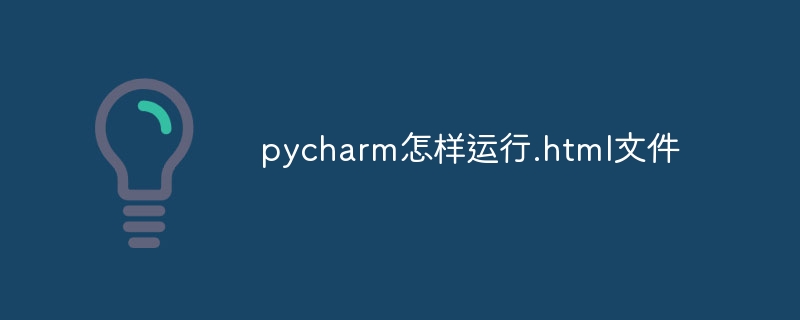Home >Backend Development >Python Tutorial >How to run .html files with pycharm
How to run .html files with pycharm
- 下次还敢Original
- 2024-04-19 11:12:161052browse
How to run .html files in PyCharm? Create a new project and create the .html file. Write HTML code. Set up a run configuration, specifying the .html file path and Python console. Select the configuration and run the file. The output will be displayed in the default browser.

How to run .html files in PyCharm
Running .html files in PyCharm is very simple, just Just follow the steps below:
1. Open PyCharm and create a new project
- Open PyCharm IDE and click "New Project" in the "File" menu ".
- Select a location and name for the project and click "Create".
2. Create a new .html file
- In the Project Explorer, right-click the project folder and select New ” > “HTML File”.
- Name the file and click "Create".
3. Write HTML code
- Write HTML code in a .html file.
4. Set the run configuration
- Click the "Run" menu at the top of PyCharm and select "Edit Configurations".
- In the "Edit Configurations" dialog box, click the " " button to add a new configuration.
-
Select "Python" as the template and enter the following:
- Name: Custom configuration name
- Script path: The path to the .html file
- Console: Select "Python Console"
- Click "Apply" and "OK" to save the configuration.
5. Run the .html file
- In the "Run" menu at the top of PyCharm, select the configuration you created earlier.
- Click the run button (green triangle icon) or press the shortcut key Shift F10.
6. View the output
- After running, the .html file will open in the default browser. You can view the output in your browser.
Note:
- Make sure you have the HTML plugin installed in PyCharm.
- If the browser does not open automatically, copy and paste the URL in the PyCharm console to open it manually.
The above is the detailed content of How to run .html files with pycharm. For more information, please follow other related articles on the PHP Chinese website!

